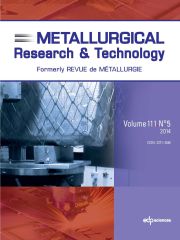Crossref Citations
This article has been cited by the following publications. This list is generated based on data provided by Crossref.
Fan, Yu Jin
Li, Zhe Kun
Wang, Wei Da
and
Han, Teng
2013.
The Effect of Surface Defect on EHL Point Contact.
Advanced Materials Research,
Vol. 765-767,
Issue. ,
p.
67.
Li, Yan-lin
Cao, Jian-guo
Kong, Ning
Wen, Dun
Ma, Heng-hao
and
Zhou, Yun-song
2017.
The effects of lubrication on profile and flatness control during ASR hot strip rolling.
The International Journal of Advanced Manufacturing Technology,
Vol. 91,
Issue. 5-8,
p.
2725.
Li, Rensheng
Liu, Ligang
Zhou, You
Lyu, Peisheng
Wang, Wanlin
Liang, Yutian
and
Xie, Boquan
2025.
Comparison of Sub-rapid Solidification and Lower Cooling Rates on Non-metallic Inclusions in Molten Steel and Its Transformation Mechanism.
Metallurgical and Materials Transactions B,
Vol. 56,
Issue. 5,
p.
5477.

